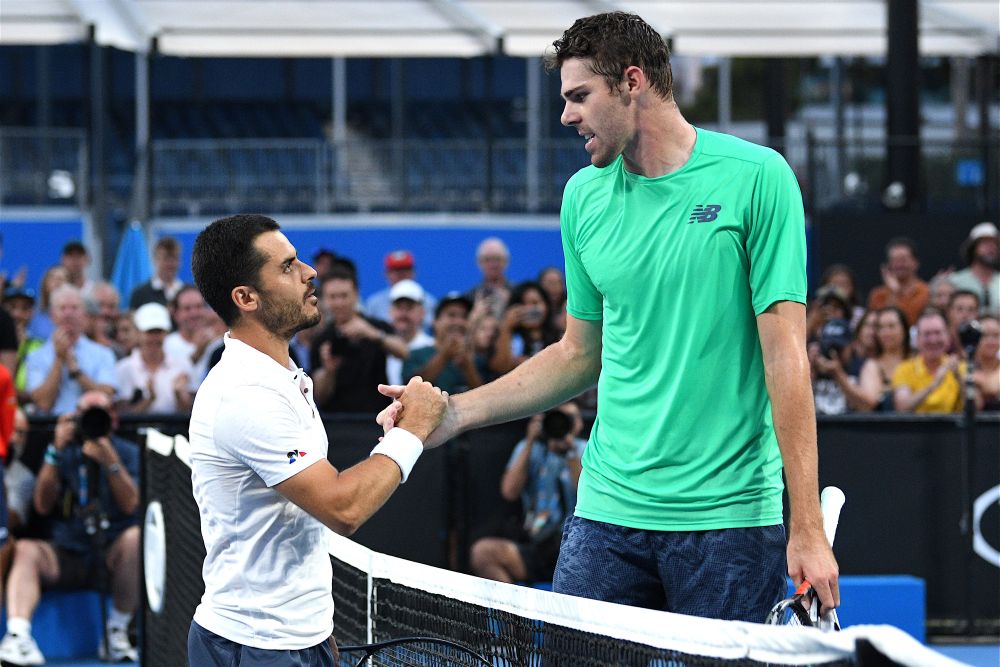“To be honest, I didn’t really understand much of his serve. I still don’t understand most of what happened out there”. This is how Thomas Fabbiano started his post-match press conference after his 6-7(15) 6-2 6-4 3-6 7-6(5) victory against Reilly Opelka in the second round of the 2019 Australian Open.
The match was a tennis rendition of David vs Goliath, as 1.73m (5-foot-6) Fabbiano was facing 2.11m (6-foot-9) Opelka, who served 67 aces during the 3h14’ match but still couldn’t come out on top of his shorter opponent. Fabbiano didn’t know how many aces he had to face during the match, he had to ask the journalists in the room: “Sixty-seven? And how many did I do? Only two?” Yes, Opelka scored more aces with his second serve (3) than Fabbiano with his first serve (2).
Opelka’s final tally was the fifth-highest number of aces anyone has ever scored in a tennis match: the legendary 2010 Wimbledon first round between Isner and Mahut (113 for Isner, 103 for Mahut) takes up the first two spots of this special ranking, with Ivo Karlovic occupying position n.3 and n.4 (78 aces in Davis Cup against Radek Stefanek in 2009 and 75 aces against Horacio Zeballos at the 2017 Australian Open).
“It was a very difficult match, different from any other. I am very happy I was able to stay in the game and swallow all the frustration for, at times, not being able to touch the ball for many points in a row. The flip side of the coin is that I didn’t run that much in this match: I probably covered more ground doing my ‘walkarounds’ to find concentration rather than during rallies”.
The problem with facing Opelka’s serve stems not only from the sheer speed of the shot but also from the angle of attack which makes the ball bounce very high. On the second game, one of the aces saw the ball whizz past Fabbiano not on the left or on the right, but ABOVE his head: he just couldn’t get to the ball above him with his two-handed backhand.
“I tried to mix it up while returning, tried to give him different looks and change my strategy from time to time. On some points I would just pick a side and move as he struck the ball, on other occasions I would put try to read the direction, but not much worked. I focused on taking care of my serve and getting into the rallies, his groundstrokes need to improve a lot for this level of tennis”.
During the fifth set tie-break, Fabbiano was able to obtain two crucial minibreaks on Opelka’s first three points of serve, both times on the American’s first serve. “I decided to give him an even different look, doing something I had never done before: I positioned right outside the doubles alley while he was serving from the ad court. I wanted to let him know that if he wanted to ace me he had to go down the T, but he served wide anyway, and I managed to get the point”.
Although he is very happy he got the win, Fabbiano hopes he will not have to repeat a similar experience too soon: “If tennis was like this every day, I would never play it, and I would never be interested in following it. But fortunately for us, there are only a few players who play like that: Isner, Karlovic, and possibly Raonic. With a bit of luck, I won’t have to face any of them for some time”.






